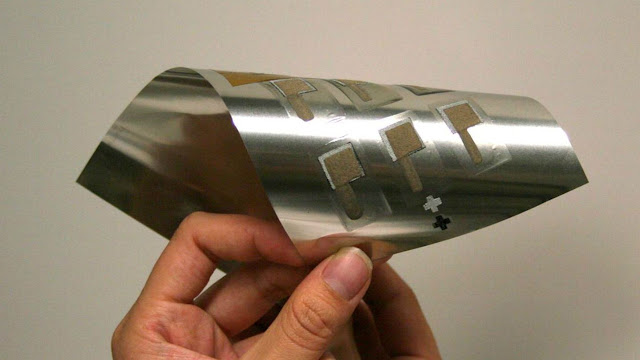Flexible Battery: The Future of Energy Storage
 |
| Flexible Battery |
Flexible
batteries provide more flexibility
As technology advances, consumers want devices that are increasingly thin,
lightweight and portable. Traditional rigid batteries cannot keep up with these
evolving demands. However, flexible batteries offer a solution by providing the
energy storage required for new generations of flexible devices. Rather than
being rigid and box-shaped, flexible batteries can bend, fold and twist without
losing performance. This opens up exciting new desaign possibilities for
consumer electronics and wearables.
Flexible batteries utilize innovative
materials and designs
For a battery to be truly flexible, engineers must develop novel materials and
architectures. Most traditional battery components like rigidmetal current
collectors and inflexible polymer separators cannot withstand bending and
flexing. Flexible battery research focuses on replacing these rigid parts with
thin film technologies. Conductive polymers, graphene compounds and thin metal
foils allow batteries to stretch and fold without tearing or breaking internal
connections. Electrolytes also require special flexible and stretchable
formulations to move ions while accommodating dynamic bends. Stacked layers of
these flexible components sandwiched between flexible electrode materials
enable fully flexible batteries.
Advanced Manufacturing Enables
Production
Producing flexible batteries at scale requires advances in manufacturing
technologies. Researchers utilize fabrication techniques developed for flexible
electronics like roll-to-roll processing. This allows for continuous,
high-throughput production of layered, flexible battery components on long
plastic or metal film substrates. Battery electrodes, separators and
encapsulation layers can be deposited via physical vapor deposition, printing
and coating in a reel-to-reel fashion. Precise alignment and stacking of
multiple thin films with nano-scale features enables robust, high-capacity
flexible battery assemblies. Improved automated manufacturing helps reduce
costs to levels that could support broad commercialization in the near future.
Applications are emerging across
industries
With further advances, Flexible
Batteries promise to enable a new generation of curved, twistable and
even skin-mountable electronic devices. In consumer electronics, they will
allow future cellphones and laptops to fold, roll and twist for easier
portability. Wearable technology may seamlessly integrate flexible power
sources, allowing devices to conform to clothing and skin. For medical use,
thin flexible batteries could power conformal biosensors, health patches and
implantable devices. Flexible power could transform automotive design by
enabling curved dashboard displays and smart lighting that wraps around complex
body panels. Other applications may include roll-up displays, e-textiles,
assistive robotics and more. As a result, the flexible battery market is
anticipated to grow rapidly over the next decade.
Technical Challenges Remain
While flexible batteries offer tremendous promise, researchers still face
technical barriers that must be overcome before widespread commercialization
and adoption. Key challenges include improving energy density, cycle life, and
thermal stability when subjected to bending. Flexible batteries currently lag
behind conventional rigid batteries in terms of power and lifespan. Further
development of high-performance flexible electrode materials, stable
solid-state electrolytes, and robust designs that prevent breakage during
flexing are areas of active focus. Lack of standard testing procedures also
makes performance comparisons difficult, and more work is also needed to ensure
flexibility does not compromise safety. Manufacturability at scale while
maintaining low costs will also be crucial for market acceptance. Continued
innovation addressing these challenges will determine how soon flexible power
truly transforms device design.
Flexible battery technology provides a promising solution that could drive
major changes across a range of industries. Future consumer electronics,
automotive components, wearable devices and medical technologies may all adopt
flexible, conformal designs enabled by developments in this field. While
challenges remain, dedicated research efforts around the world aim to bring
flexible power sources from the laboratory to commercial reality within the
next 5-10 years. Flexible batteries embody the ongoing quest to develop thinner,
lighter and more dynamically functional energy storage solutions in step with
rapidly-evolving technology. With further progress, they may soon transform how
we design, power and experience next-generation electronic devices.
Get more insights on This Topic- Flexible
Battery



Comments
Post a Comment